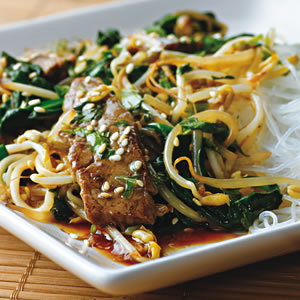
Without any of these traits, Korea is has the highest per capita consumption of chilies allover the planet. So lets discuss the basis of hot and spicy Korean dishes. In twelfth century, Chinese cuisine was introduced to chilies by the Portuguese. Portugal natives are supposed to be the provider of chilies into China from there these fiery seeds are handed over to Korean styles of cooking. There is also a perception that the chili was brought by the Dutch to Korea much later, close to the 17th century.
Although chilies are considered as the basis of Korean preparations but before the arrival of chilies also Korean food used to be piquant. The tanginess of Korean dishes is due to the utilization of mustard plant and radishes in dishes, which, along with chilies, even now exists.
The most popular chilies in Korea is a variety famous as Koch’s. This is a long, finger-like chili, having a smooth skin that tapers at the base. It is somewhat related to the kinds of chili used in western cuisines to be precise Anaheim or New Mexico variety.
This chili is included to make a peppery, red chili powder that comes in three forms: coarse form, flaked, and fine. The coarse form is often included to make kimchi, a variety of fermented cabbage extremely accepted in Korea. The chili flakes are often used to prepare a nice dressing with tangy taste. Finely powdered chili powder is incorporated to make a well-known Korean chili paste called koch’ujang’, it is the most fundamental content in almost all Korean recipes. Though this chili paste can be easily made at home but if you want you can purchase from any of the Korean market. Besides the fine red spicy chili powder, the paste comprises of barley malt powder, water, sweet rice flour, hot red chili powder, fermented soybean paste, soy sauce, and salt.
Rice and noodles are the chief foods in Korean dishes and seasonal vegetables are dotingly included to make Korean recipes. Sweet, spicy, sour, bitter and hot flavors are the main tastes in Korean cuisine. The elaborated Korean food make Korean foods well-liked worldwide.
For further information on Korean recipes please browse Great Korean Recipes. You may also have a look at some great Thai recipes by visiting Great Thai Recipes.
Propecia Finasteride Information - where to buy generic propecia - hairloss product
Naltrexone Generic Revia - buy naltrexone uk - alcohol abuse drug
Lexapro pharmacy - buy lexapro 20mg - anxiety treatment
No comments:
Post a Comment